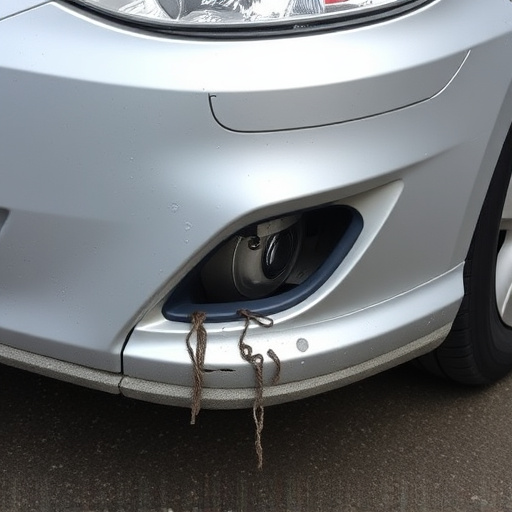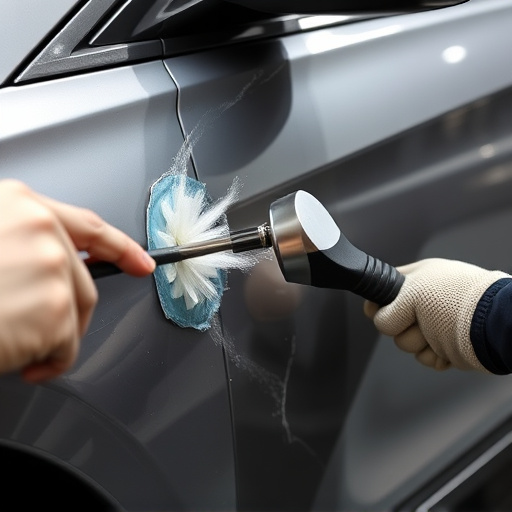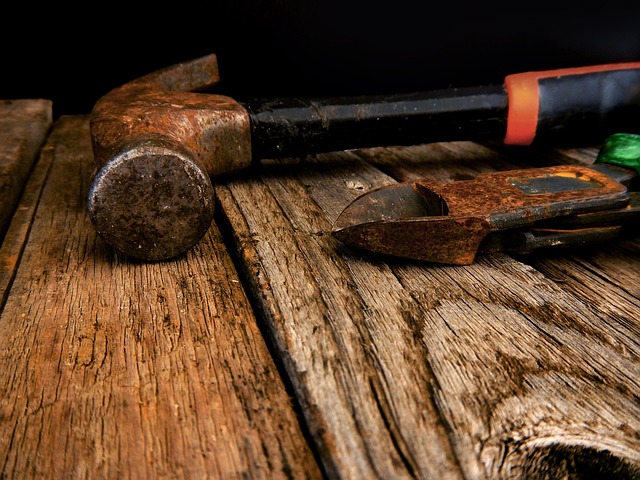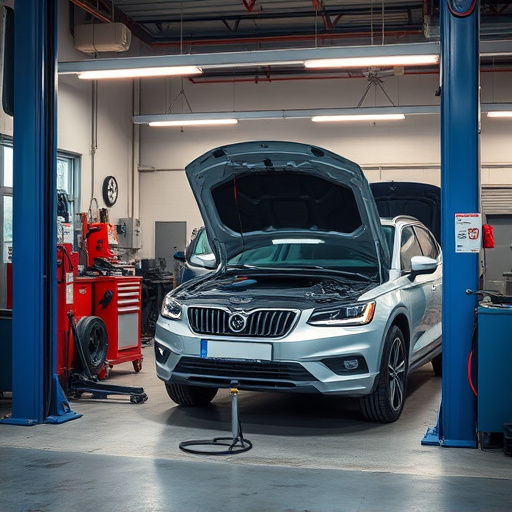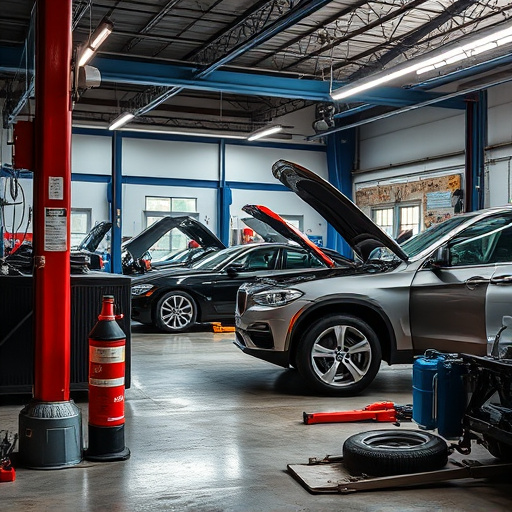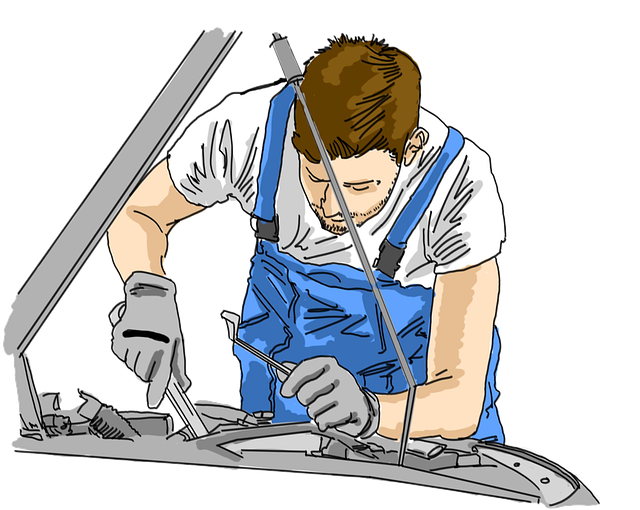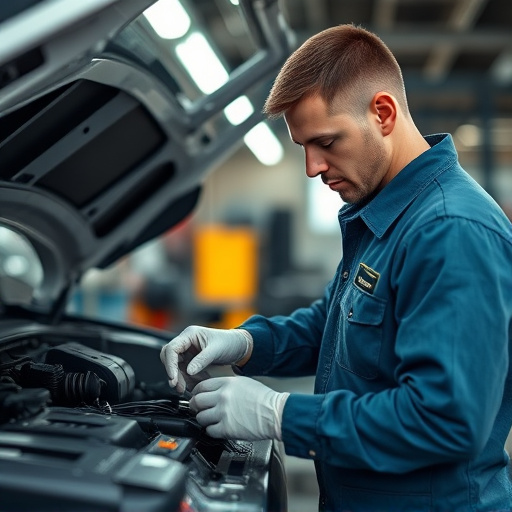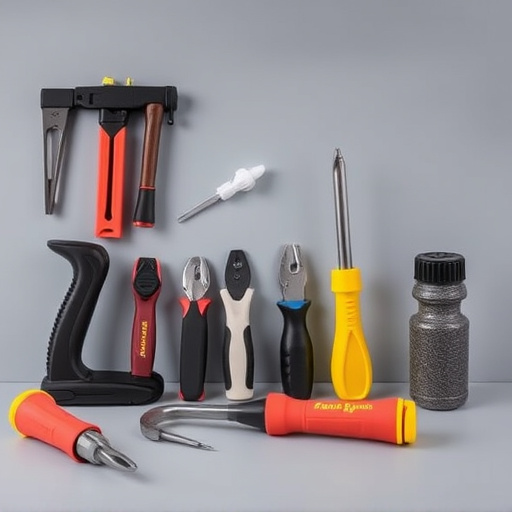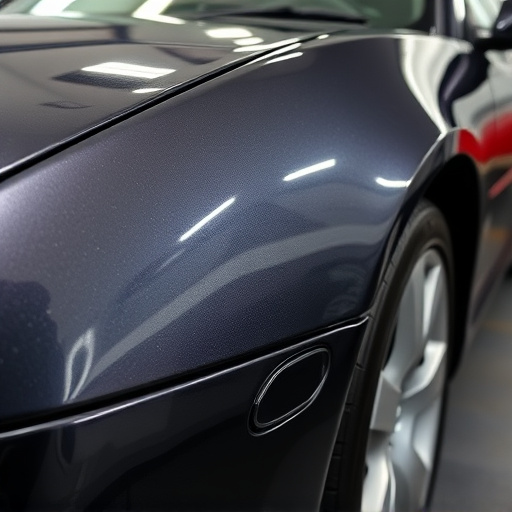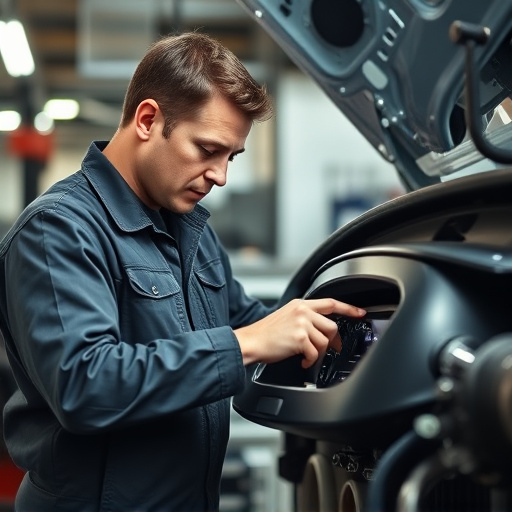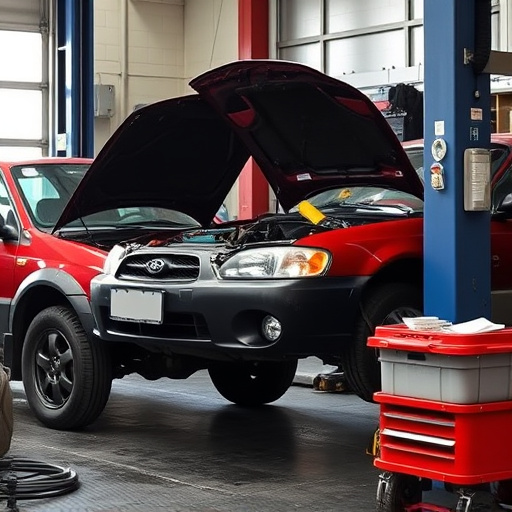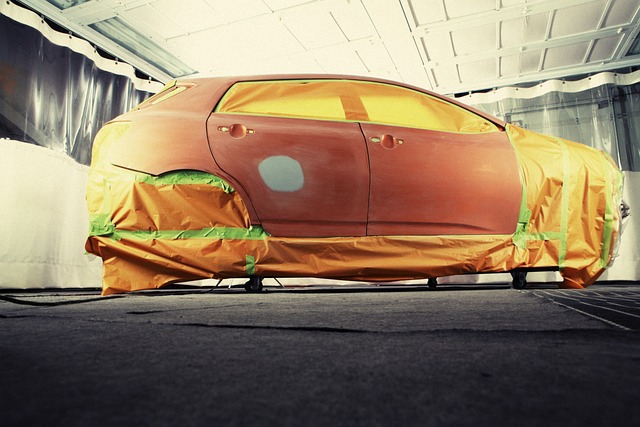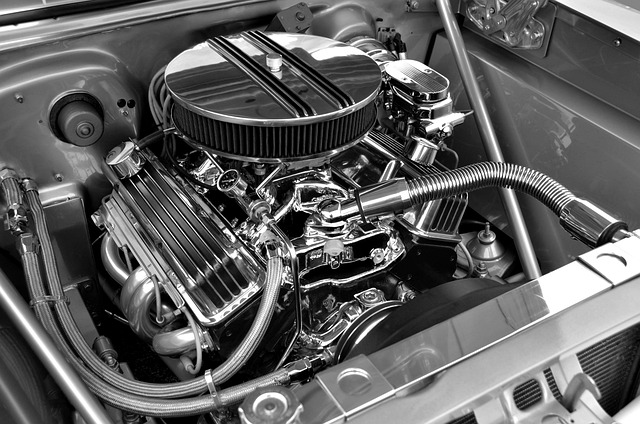Before base coat clear coat repair, thoroughly clean and inspect vehicle surface, ensuring dryness. Prepare damaged area by cleaning and sanding for even application of base coat using thin, uniform layers. For precise results around curves, use specialized tools. Apply clear coat with spray gun at 6-8 inch distance, making overlapping passes. Allow layers to dry completely per manufacturer guidelines for seamless blend.
Repairing your vehicle’s base coat and clear coat is a crucial step in maintaining its finish. This guide will walk you through the process, ensuring professional-level results. First, prepare the surface by cleaning and inspecting it thoroughly. Then, apply the base coat evenly for optimal adhesion. Next, master clear coat application techniques to achieve a seamless, durable repair. By following these steps, you’ll learn how to effectively use base coat clear coat repair materials, restoring your vehicle’s glossy finish.
- Prepare the Surface: Clean and Inspect
- Apply the Base Coat: Even Coverage
- Clear Coat Application: Techniques for Success
Prepare the Surface: Clean and Inspect
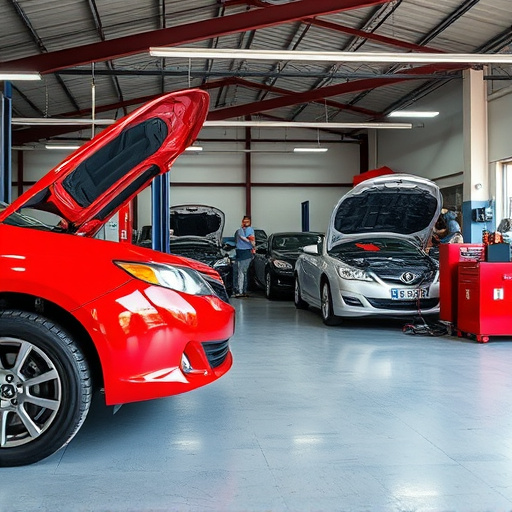
Before applying any base coat clear coat repair materials, it’s crucial to start with a clean and inspected surface. Begin by thoroughly washing your car or vehicle to remove any dirt, dust, or debris that might interfere with the bonding process. Use a dedicated car shampoo and microfiber towels for a scratch-free cleaning. Once cleaned, inspect the damaged area closely. Look for cracks, chips, or dents in the base coat and clear coat of the car bodywork. This visual assessment will help you identify the extent of the repair needed and ensure that the chosen repair materials are suitable for your specific vehicle body shop needs.
Pay special attention to the edges and corners where damage often occurs due to environmental factors. Ensure that the surface is dry before proceeding to the next step. A well-prepared surface guarantees a more seamless application and better results in car dent repair, making it an essential step in any base coat clear coat repair process.
Apply the Base Coat: Even Coverage
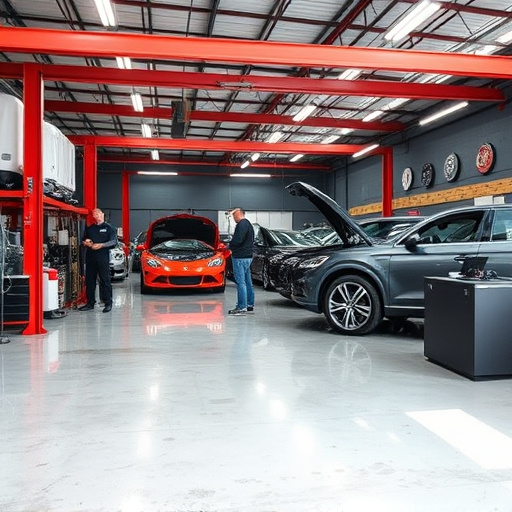
When repairing a damaged area with base coat clear coat materials, achieving even coverage is paramount for a professional finish. Begin by preparing the surface thoroughly—clean and sand it to ensure there’s no dirt or debris present. This step is crucial for adhesion, so take your time ensuring a smooth base. Apply the base coat using a thin, even layer, working in small sections at a time. A consistent thickness will help prevent runs and bubbles, which can mar the final appearance.
For best results with luxury vehicle repair or more intricate fender repair tasks, consider using specialized tools designed for automotive body work. These can ensure precise application, especially around curves and tight spaces. The goal is to create a seamless blend between the repaired area and the surrounding paintwork, so uniform coverage is key. Whether it’s a minor dent or a significant scratch, this meticulous approach will contribute to a high-quality, long-lasting repair that matches the original automotive body work.
Clear Coat Application: Techniques for Success

Applying clear coat for base coat clear coat repair requires precision and a few key techniques to achieve a professional finish. First, ensure your car’s surface is thoroughly cleaned and prepared. Any dirt, dust, or existing damage must be addressed before applying clear coat, as these imperfections will show through the finished layer. Sanding the area gently with fine-grit sandpaper can help create a smooth surface for even coating.
Use a thin, even application of clear coat to avoid runs and drips. A spray gun is often the best tool for this task, allowing for controlled and consistent coverage. Maintain a steady distance from the car’s surface while applying the clear coat, typically around 6-8 inches, and move the gun in smooth, overlapping passes. Allow the first layer to dry completely before adding subsequent coats, following the manufacturer’s guidelines for drying times. This meticulous approach ensures a seamless blend with your base coat during final car body restoration or collision repair center procedures.
Applying a base coat and clear coat is an effective way to restore your vehicle’s finish and protect it from future damage. By carefully preparing the surface, ensuring even base coat coverage, and mastering clear coat application techniques, you can achieve professional-looking repairs that enhance your car’s appearance and longevity. Remember, the right materials and proper application are key to successful base coat clear coat repair.
